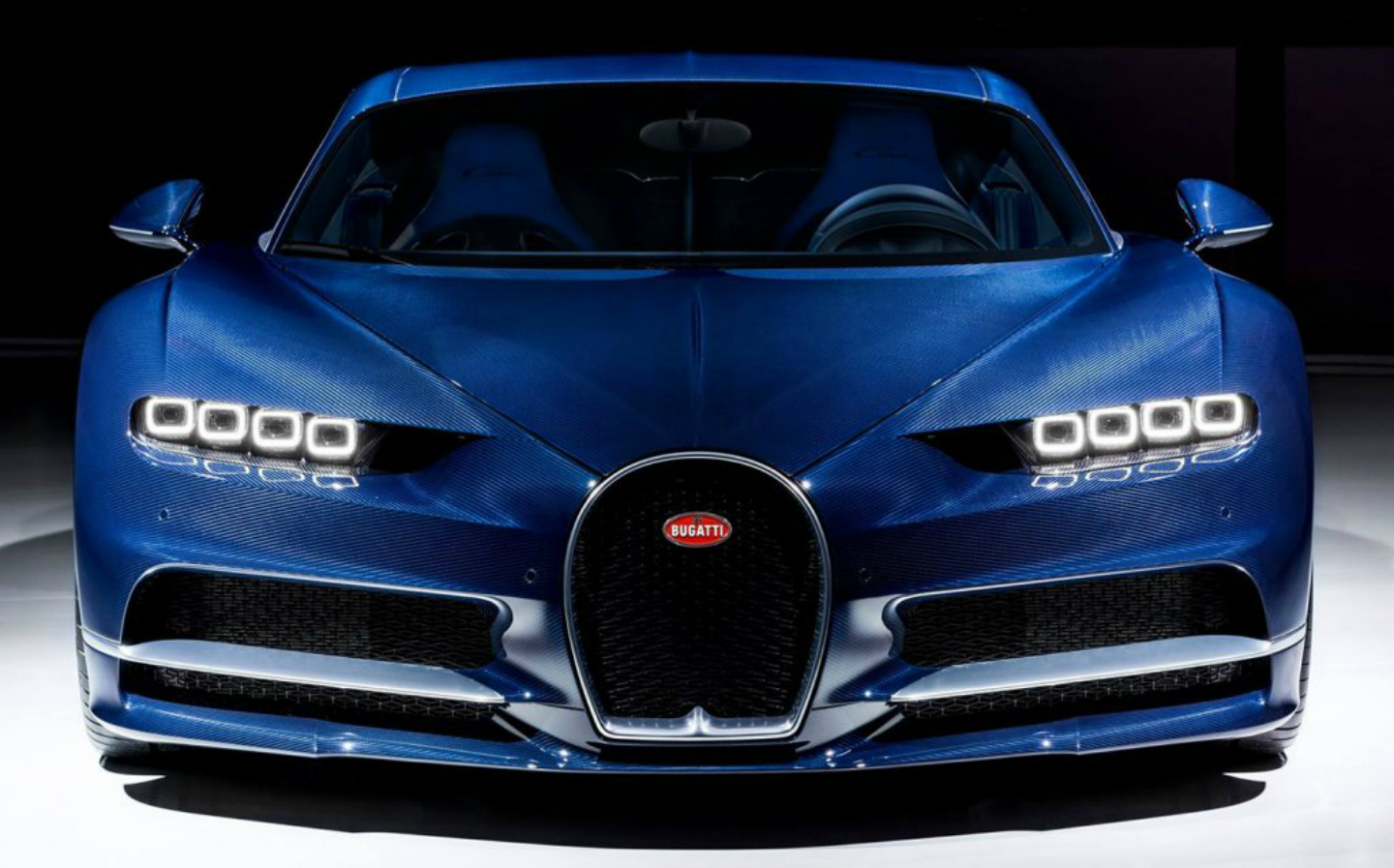Reverse gear: 2017’s top 10 new car reviews
The year flies by
THE YEAR is nearly over. But what a year it has been for drivers — and boy, it’s gone fast.
Ferrari and Lamborghini proved there is still life left in gas-guzzling V12 engines. And out of nowhere came a little French car maker few British drivers have heard of — Alpine — with the fabulous A110 sports car. Then there was the Bugatti Chiron. We’re still catching our breath after driving the £2.5m hypercar…
Britain’s biggest-selling car, the Fiesta, has been replaced. For families, SUVs from Jaguar, Land Rover and Volvo were eagerly awaited. And Nissan’s hugely popular Qashqai also underwent changes, some less impressive than others. And then the world waited to see if Elon Musk’s mass-market electric car, the new Model 3, could live up to the hype and satisfy the hundreds of thousands of electric car acolytes who had placed deposits for the new saloon – and prove the answer for the millions of drivers who want to ditch their diesel car.
We’ve rounded up 10 of the most interesting cars that Driving reviewed in 2017. Here’s what we had to say.
Browse NEW or USED cars for sale
Alpine A110
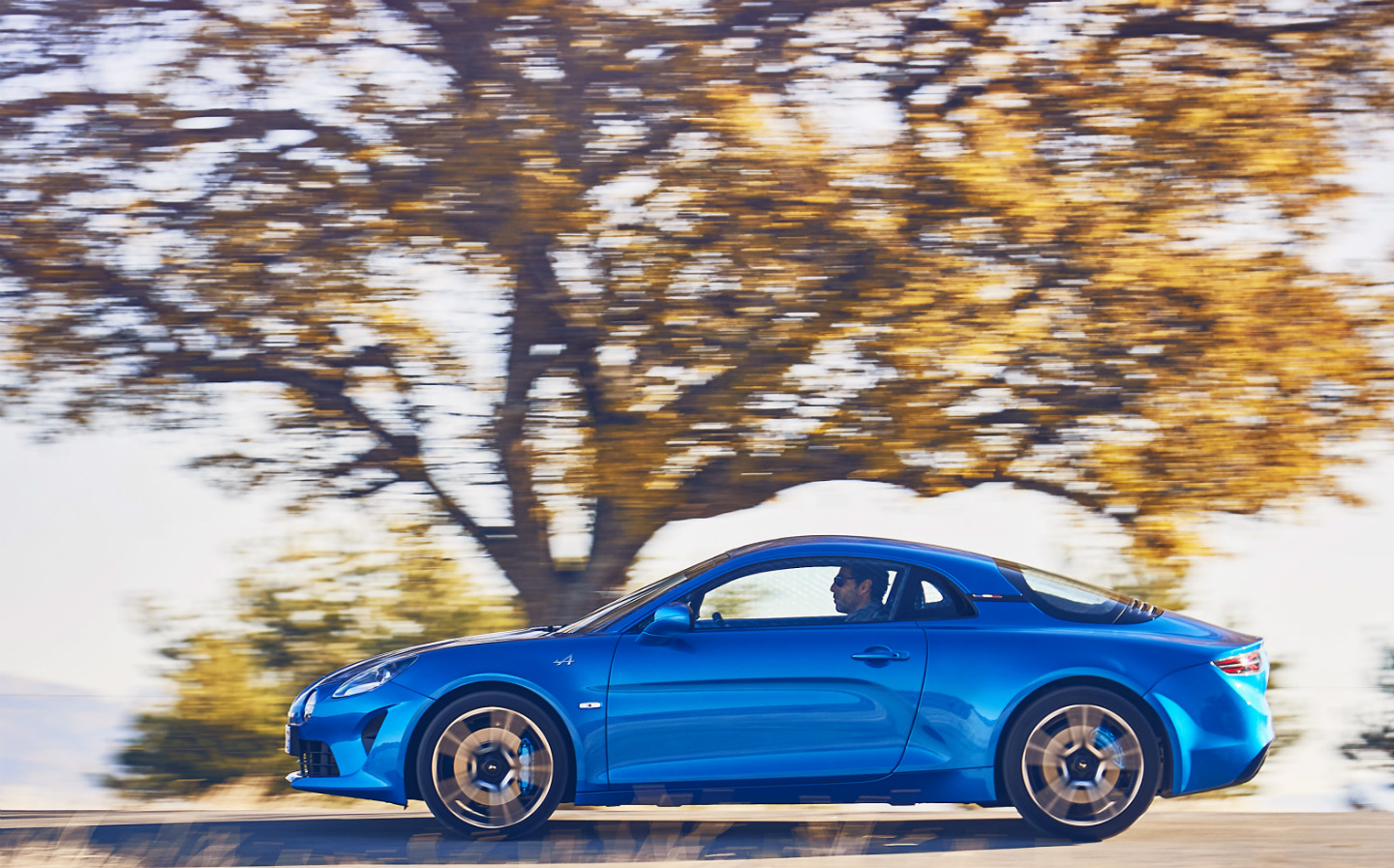
Reviewed: December
Alpine has created something special. The A110 flows down a winding, bumpy country road with the calm composure of Mary Poppins rounding up children.
At a race track, as you exceed the tyres’ grip the car is eager to use the rear weight bias to the driver’s advantage, setting off a pendulum motion that progressively pivots the tail around the centre of the car.
In most mid-engined sports cars, this would be the point that you close your eyes and hope for the best. In the Alpine, the surprise is that everything happens so gradually that you have time to decide what to do next; correct the slide or apply the throttle and make things even more exciting.
After misbehaving in such a fashion, it dawns on you that your heart isn’t racing and your palms are dry. Alpine has made a sports car with which the driver feels at one.
Read the full review of the Alpine A110
Bugatti Chiron
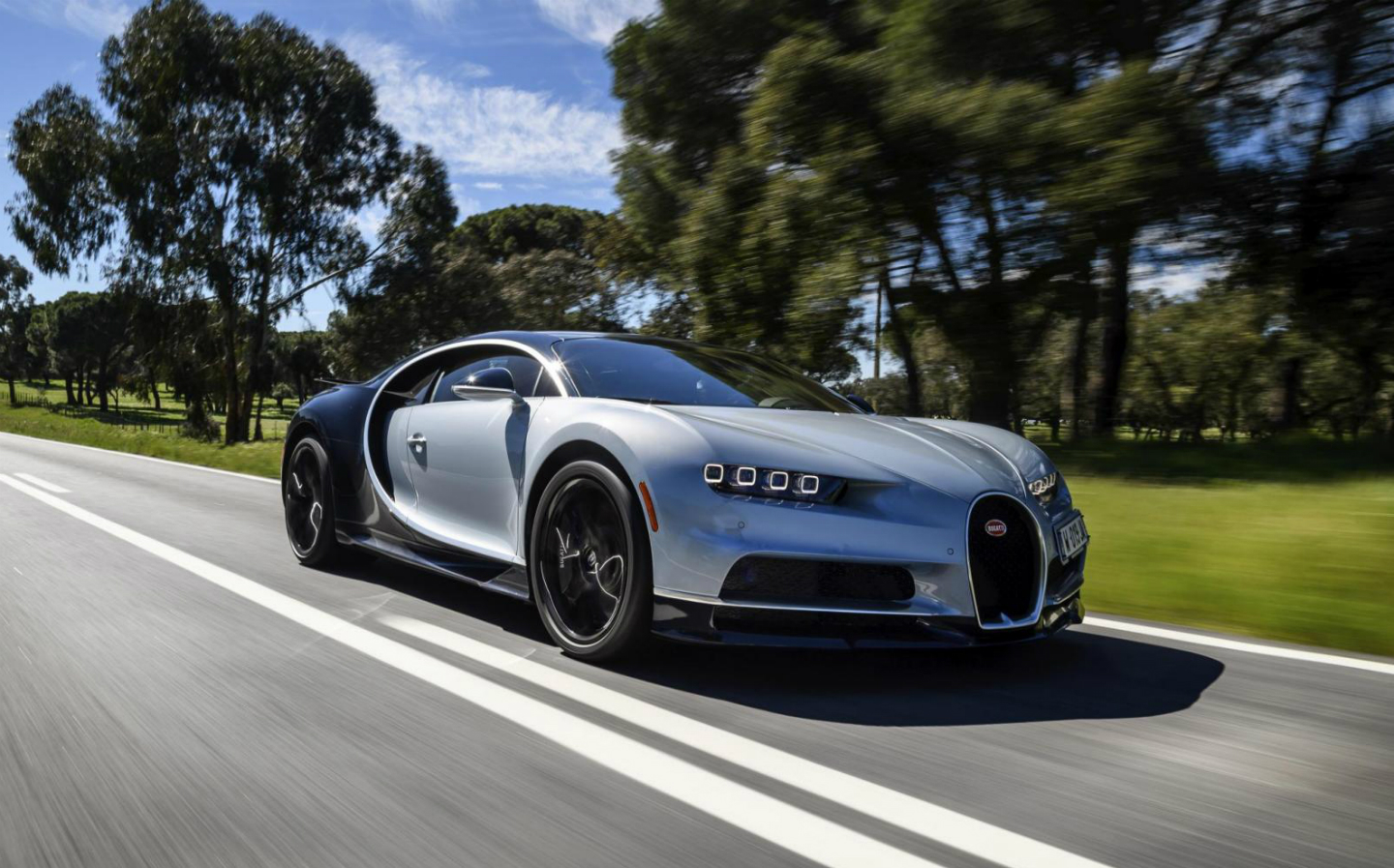
Reviewed: March
Money isn’t an object for the sort of people that will buy a Chiron; Bugatti says that they are typically spending £260,000 personalising theirs. That’s enough for a new Ferrari 812 Superfast.
The Chiron is able to power to 200mph in what feels like as much time as it takes to sneeze. At such speeds, it’s as stable as a nuclear bunker.
Yet the eerie thing is that it’s only just getting warmed up. This is where the Chiron laughs in the face of cars from Aston, Ferrari, Lamborghini, McLaren and Porsche. Their fastest machines start running out of puff beyond 200mph. Whereas this one is just getting into its stride.
Lifting off the throttle above 112mph, the rear spoiler changes its angle to act as an air brake. So even without touching the brake pedal, there is noticeable deceleration, akin to lifting off the throttle in an electric car as the motors turn into generators and recover energy to the battery.
Read the full review of the Bugatti Chiron
Ferrari 812 Superfast
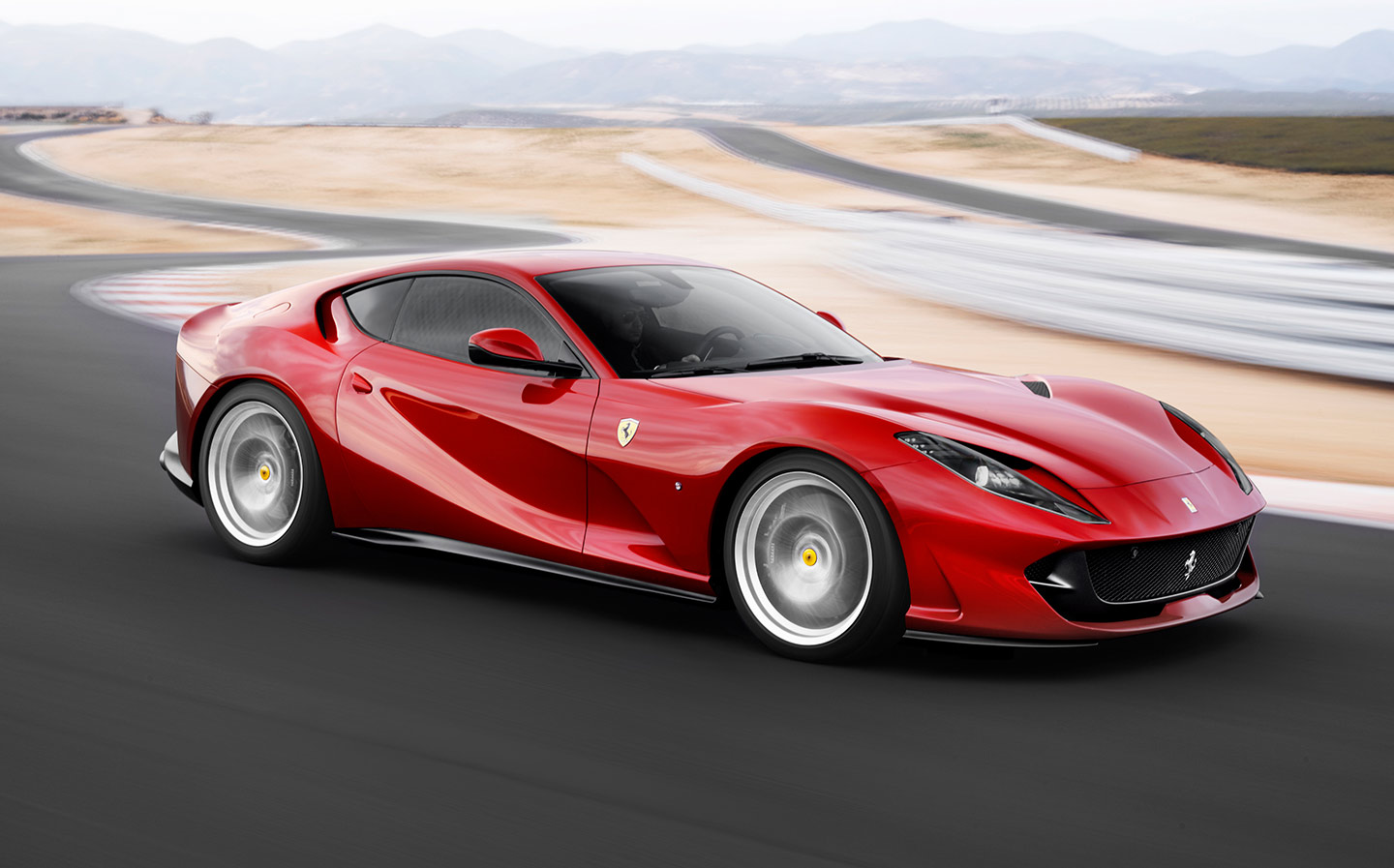
Reviewed: July
The 812’s V12 is a gargantuan 6.5 litres, up from the 6.3-litre unit in the F12berlinetta the car replaces. It won’t win prizes for eco-friendliness, but if you can afford the juice, it’s a dose of old-school charm. Ferrari reckons the V12 has only a few years before it’s overtaken by the rush to hybridisation, so enjoy it now.
Nothing, but nothing, sounds like a Ferrari V12. This engine will rev to 8,900rpm with a cultured Italianate howl from the quartet of exhaust pipes. If anything, it sounds even better outside the car than in, which is as things should be: aficionados reckon a Ferrari should be enjoyed by everyone.
It’s in the duality of character that the Ferrari scores over its rivals. In a McLaren 720S or a Lamborghini Aventador you’re forever reminded you’re in a mid-engined supercar. In the Ferrari, should the mood take you, you can settle back and be propelled with serenity to the French Riviera. And you can even take some luggage.
Read the full review of the Ferrari 812 Superfast
Ford Fiesta
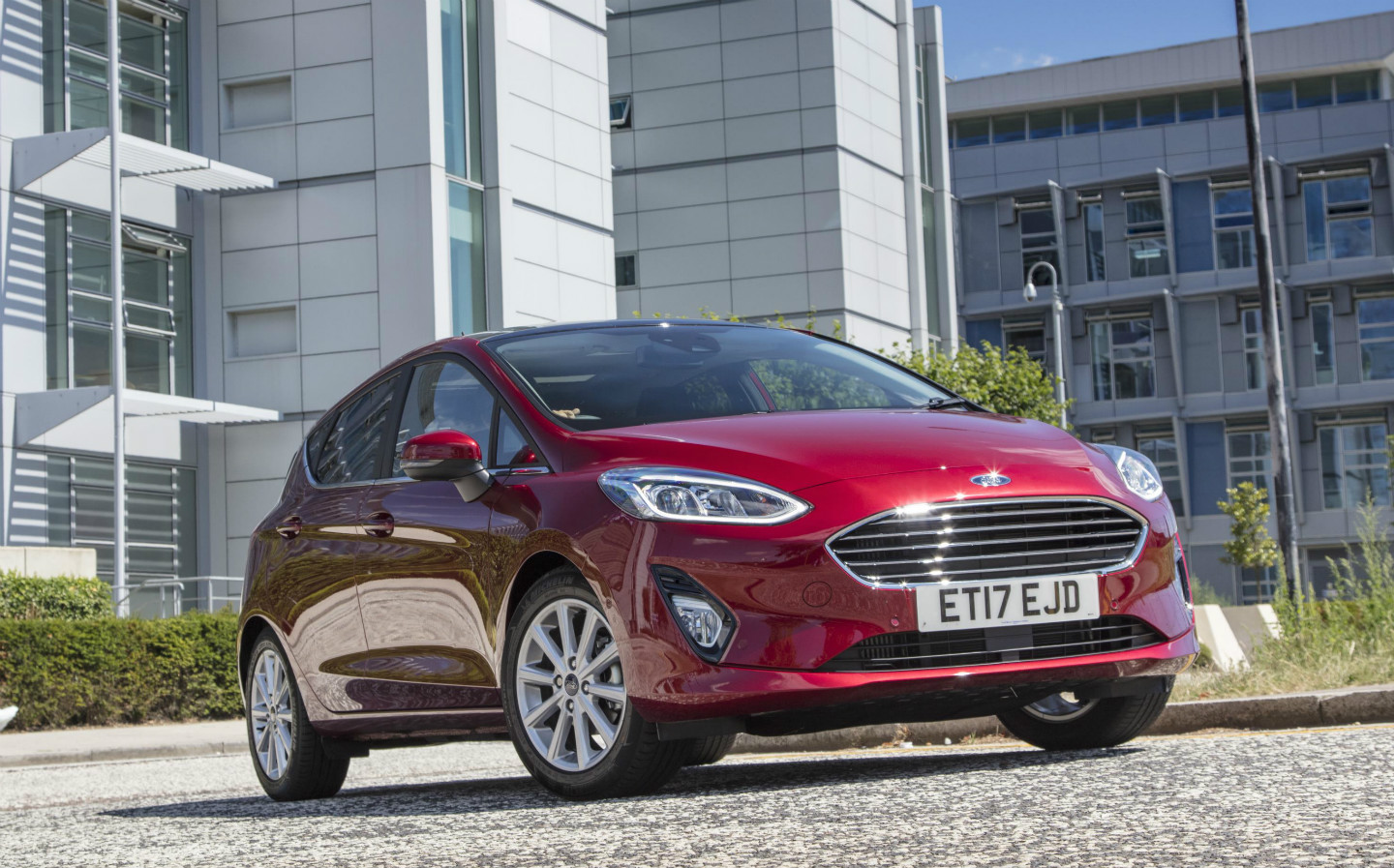
Reviewed: August
The seventh-generation version has a big job to do: keep ahead of the chasing pack. Ford says it has taken a big leap forward: this may be one of the most affordable small cars on the road, but it can park itself, slam on the brakes if a child walks out in front of it, steer you back into your lane if your attention wanders, respond to spoken commands such as “I need a coffee” and stream your tunes through a B&O sound system.
It’s curious that the Fiesta has lost some of its good looks. The previous version stood out from the crowd like a giant Toblerone in the duty-free. This one is as bland as a supermarket’s own-brand cooking chocolate.
The Fiesta’s greatest asset of late has been the way it drives, and this new version is no exception. It is by some margin the best small hatchback for anyone with even a passing interest in getting from A to B with a smile on their face. And even if you don’t count yourself as a motoring enthusiast, you’ll enjoy this car for reasons you can’t quite put your finger on.
Read the full review of the 2017 Ford Fiesta
Jaguar F-Pace 2.0d
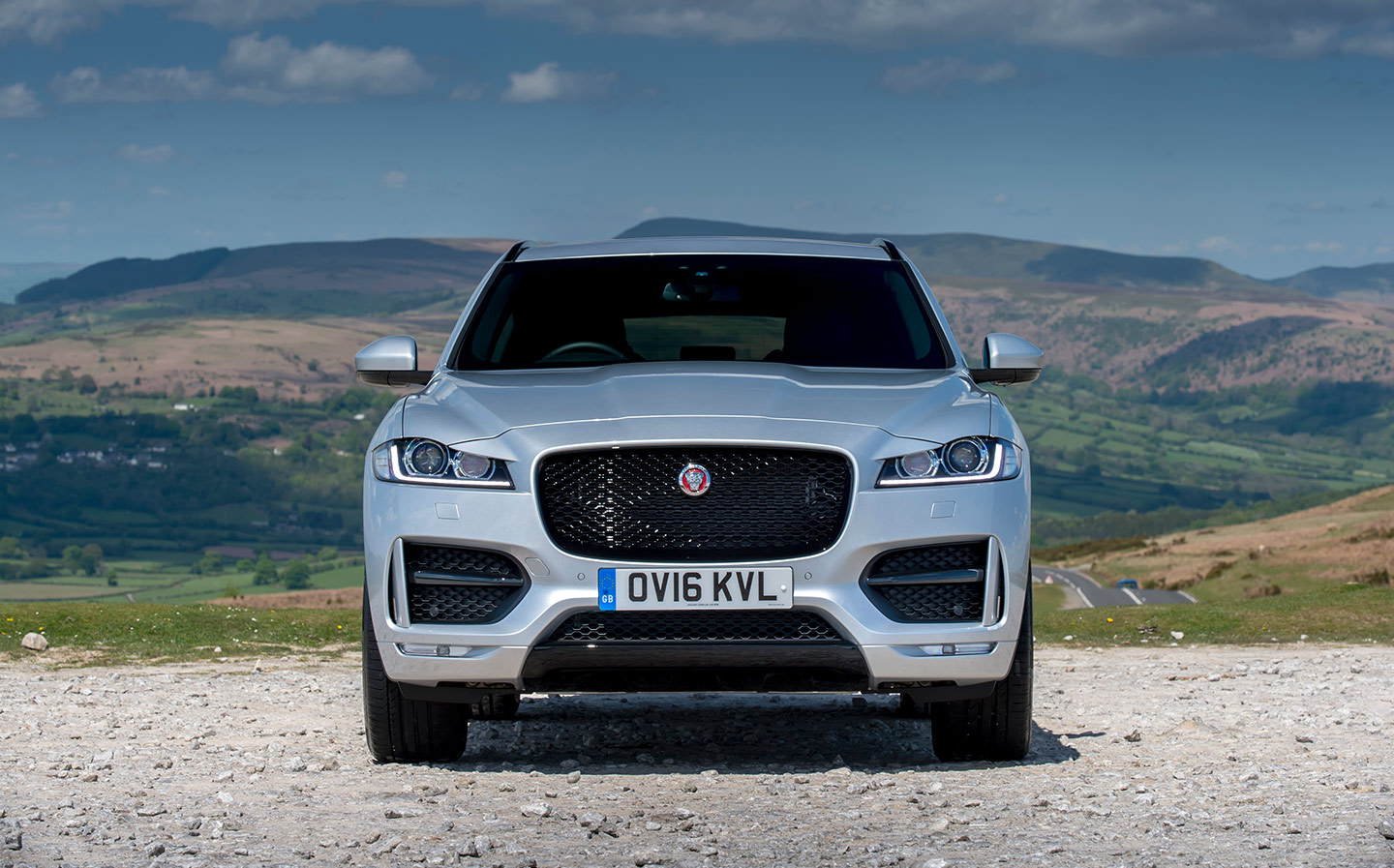
Reviewed: April
It’s the fastest-selling Jaguar of all time, the company says. And the variant most drivers buy is the 2.0d R-Sport AWD, seen here.
We can only assume all those owners are hard of hearing, because if our test car was anything to go by, this is one of the most unpleasant-sounding diesel engines on the road.
At low revs, the most appalling grumbling noise and vibration come up through the F-Pace’s aluminium structure, as though a washing machine on the spin cycle were underneath your seat.
It might be possible to overlook the racket if it went away when you were cruising on main roads. Unfortunately, at 70mph the engine is turning over at 1,700rpm, exactly the point at which it rattles the cabin. So you must decide: drive at 60mph and arrive late everywhere you go, or speed up to over 80mph and risk losing your licence.
Read the full review of the Jaguar F-Pace 2.0d
Lamborghini Aventador S
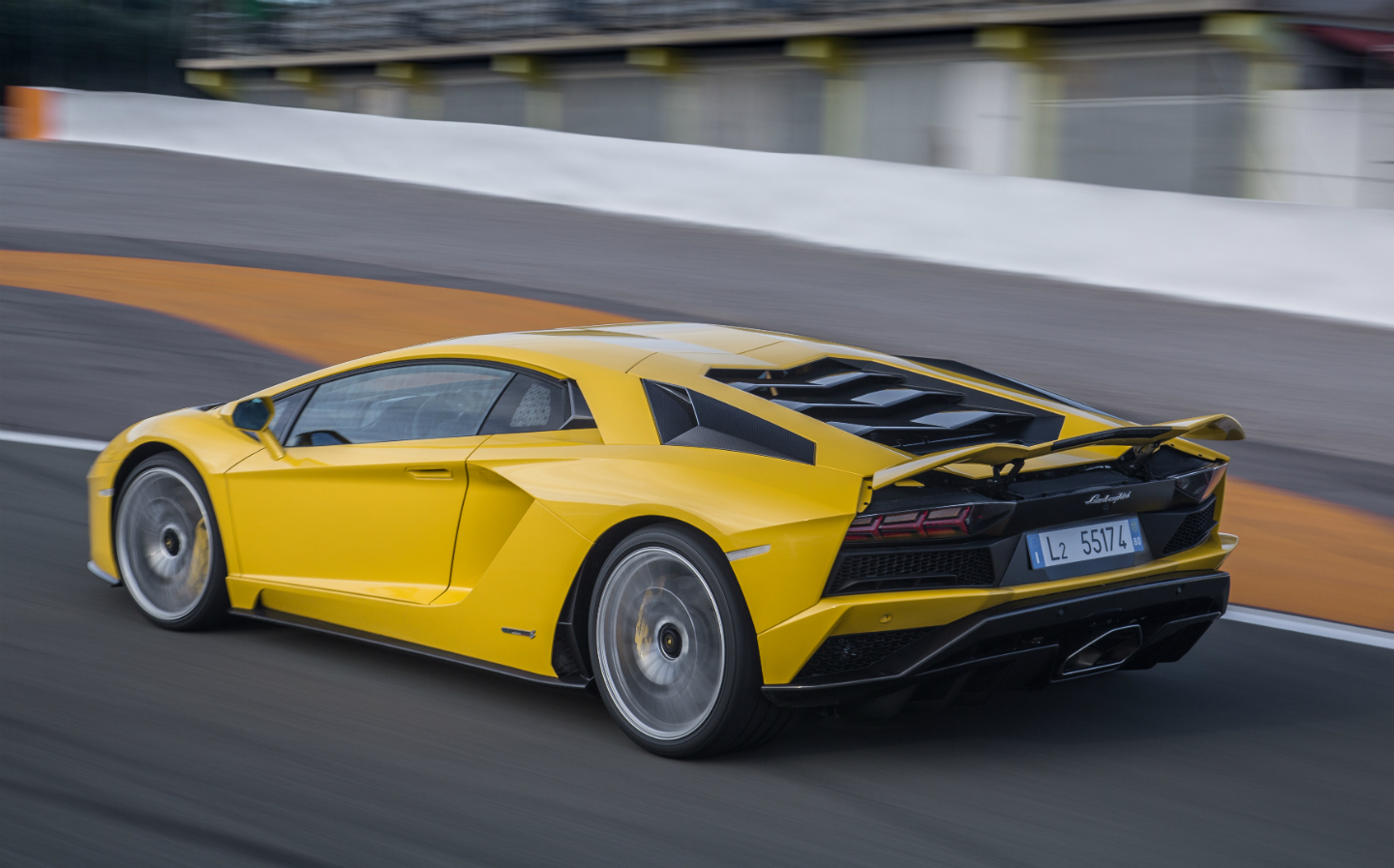
Reviewed: January
For half a day, Stefano Domenicali, Lamborghini’s chief executive officer, and his trusted band of acolytes stood around, anxiously peering out of windows to see if there was a break in the weather. They needn’t have bothered; the rain was pouring in through the roof and seeping under doors.
Standing water covered most of the Ricardo Tormo race track. The Pirelli P Zero tyres appeared to have no more tread than a band of liquorice. And at one point, I could have sworn I saw the concrete crash barriers lick their lips…
As rival supercar makers turn to turbocharging and hybrid power, Lamborghini’s naturally aspirated V12 engine is as authentic as an open fire in a world of flame-effect lights.
Its bellow is a reminder that Formula One cars have been castrated. From 2,500rpm it sounds good; after 5,000rpm it makes the driver’s hair stand on end. And as it roars toward the 8,500rpm rev limit, you find yourself laughing like a man possessed.
And by Jove, the Aventador S is fast. It can make your eyes water, stomach turn giddy and bowels clench with just the slightest prod of the throttle.
Read the full review of the Lamborghini Aventador S
Land Rover Discovery
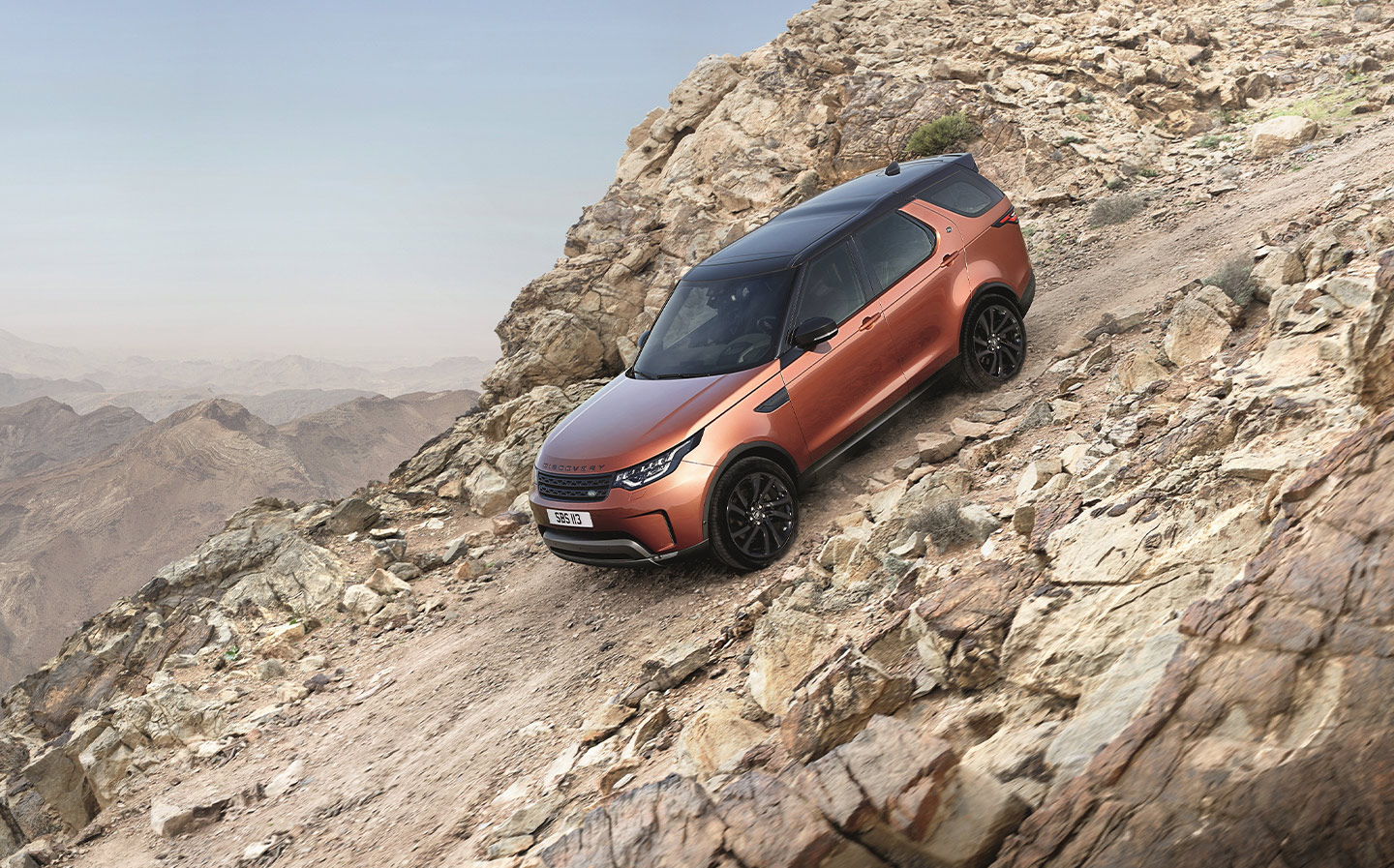
Reviewed: March
While gunning a £50,000 car up a 40ft dune in the middle of the desert on a gradient that would challenge a dune buggy, the sand doing nothing for the pristine paintwork but everything for its credentials, somehow the wheels seemed to be finding grip, even axle deep in the loose surface. The car’s electronics kept it inching up the slope by making tiny adjustments to the braking and throttle response. If it were remotely alive, we’d say it was enjoying itself.
There are some clever features its predecessor did not have, notably the fold-flat seating, which you can control with buttons near the tailgate, via the driver’s touchscreen or even through a phone app. And there’s also a wristband to lock and unlock the car, so no need to carry the key in your jogging bottoms or kayak.
Why is there no diesel-electric hybrid? Come on, Land Rover: there’s no excuse, especially when you have one of the world’s most advanced engine plants. A greener Discovery is not just Bear Grylls; it’s bare minimum.
Read the full review of the 2017 Land Rover Discovery
Nissan Qashqai

Reviewed: October
The Nissan remains one of the most talked about cars on parenting website Mumsnet. It’s the MacLaren stroller of SUVs.
This is peculiar, because the Qashqai has never excelled at anything. Ask drivers what they like most about it and it’s simply a reasonable all-rounder. For busy, sleep-deprived parents, that’s good enough, especially when you take a close look at some of the deals available.
There’s a new steering wheel, which sure enough, steers the car. There are new seats, which feel much like the old seats. And the interface for the touchscreen controls has been redesigned, though it’s still not as good as rivals’ systems.
The best-selling model — the N-Connecta — isn’t four-wheel drive, it’s front-wheel drive, and comes with a 1.5-litre diesel engine that feels so woefully underpowered for this size of car that you soon find yourself shouting at it, wondering how your life ended up in the slow lane.
None of this has stopped drivers buying it. There are better SUVs, but somehow the Qashqai remains the comfort blanket of the family car market. And for many customers, that’s good enough.
Read the full review of the 2017 Nissan Qashqai
Tesla Model 3
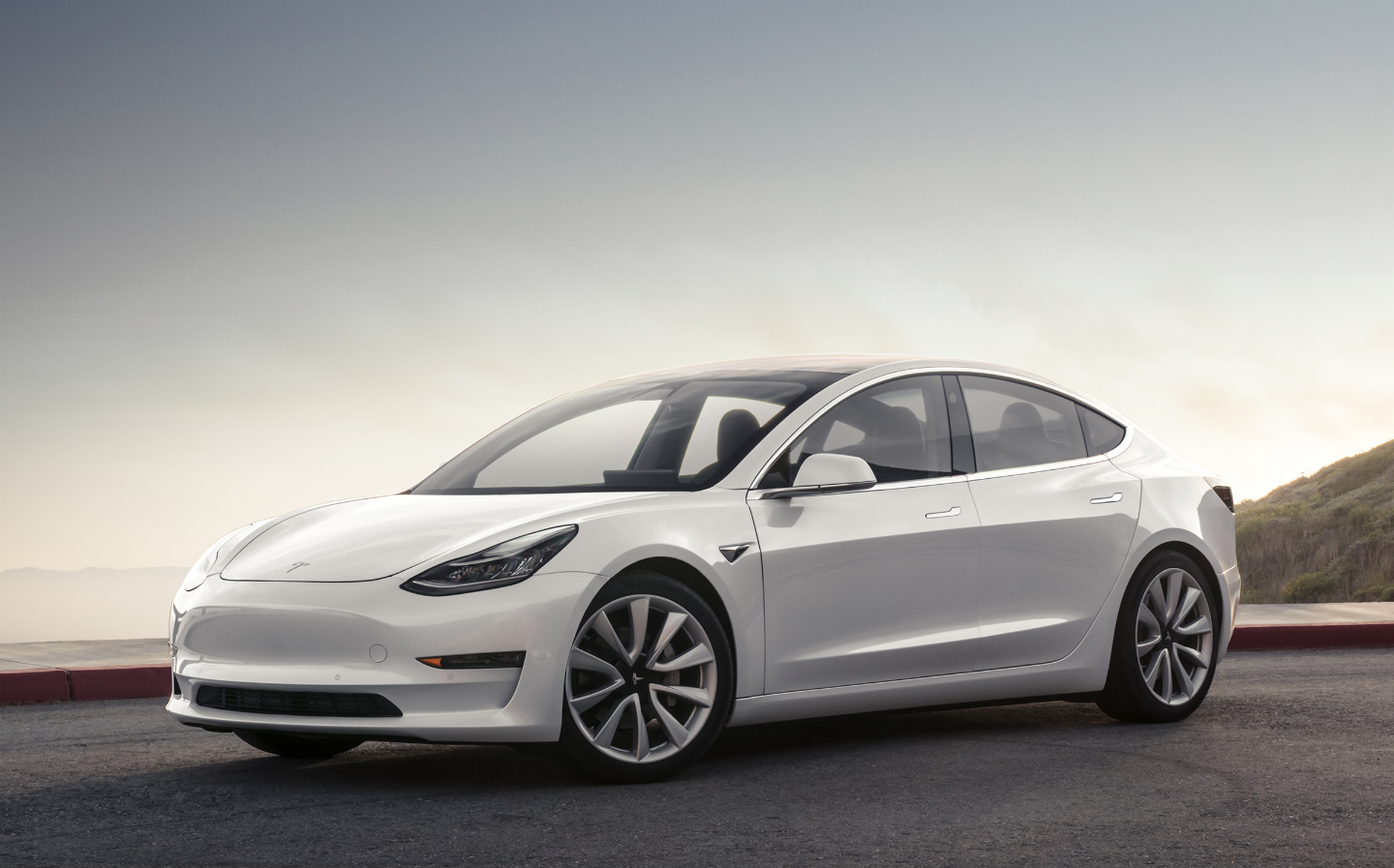
Reviewed: July
The car unlocks automatically when its paired smartphone approaches. Inside, all dials, controls and knobs have been replaced by a single 15in touchscreen. It’s liberating, if unnerving, to be faced with just a steering wheel and pedals.
But when we fire up the car, all becomes clear. The accelerator is immediately responsive and the car sets off with a kick. With electric cars, there’s no need to work the gears: all the power is available immediately.
The Model 3 will accelerate from 0 to 60mph in less than six seconds and has a range of at least 200 miles, according to the company. It can be charged overnight from a domestic mains supply or from one of Tesla’s network of roadside superchargers that will add a range of 130 miles in about 30 minutes.
When I let up on the accelerator, strong regenerative braking — which feeds kinetic energy back into the batteries — slows the car automatically. I scarcely need to use the brake at all.
So far, so Starship Enterprise. The real warp-speed leap came when I double-tapped the gear-shift lever, turning on the autopilot. Immediately, the steering wheel twitched as the car used its built-in cameras, radar and ultrasonic detectors to follow lanes and avoid other road users.
Read the full review of the Tesla Model 3
Volvo XC60

Reviewed: May
Volvo has really found its aesthetic mojo. Long gone are those Seventies boxes; Volvos now have curves in all the right places. As you might expect, the XC60 borrows heavily from its XC90 big brother, inside and out, with striking split-level headlights, a large grille and a rear light cluster that comes horizontally inwards, as well as downwards, framing the rear window.
The interior is even more impressive, essentially taking everything you’ll find in 90-series Volvos (the S90 saloon, V90 estate and XC90) and squishing it to fit inside the XC60. There’s the portrait-format touchscreen in the centre of the dash and an uncluttered layout with a mix of light and dark tones and soft and hard materials.
In function, though, there are some grumbles. For example, front dual-zone climate and seat adjustment controls are all via the centre touchscreen, so if you’re setting the sat nav and the passenger decides to adjust their lumbar support via the button on the side of the seat, your destination-setting activities have to be put on hold. And it’s not available in a seven-seat version, unlike the Land Rover Discovery Sport.
Read the full review of the 2017 Volvo XC60


